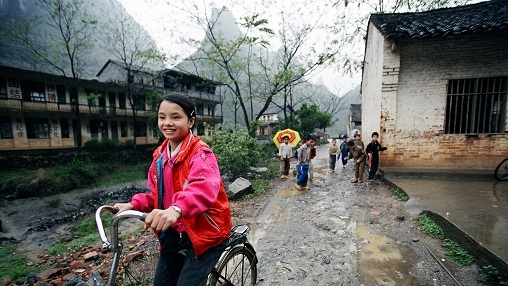Poverty is a complex problem that must be addressed at all levels of society. The Bank's poverty reduction experts work within many areas and programs to meet our goals. Here are some of the key areas we focus on.
Climate change is expected to hit developing countries the hardest. Higher temperatures, changes in precipitation patterns, rising sea levels, and more frequent weather-related disasters pose risks for agriculture, food, and water supplies. At stake are recent gains in the fight against poverty, hunger and disease, and the lives and livelihood of billions of people in developing countries.
Community-driven development programs encourage villages, urban neighborhoods, or other household groups to managing their own development resources. It is a bottoms-up approach to development that seeks to give communities and local governments control over planning and investments. Community-based development efforts have had mixed results.
Natural disasters push people into poverty and make the poor even poorer. Before the 2004 Asian tsunami, for example, about one-third of the population in some coastal regions of Indonesia lived in poverty. After the disaster, nearly half of the population in those regions existed below the poverty line and depended on food aid. Cost-effective risk reduction programs, such as early warning systems, better building codes and emergency preparedness strategies are the best defense against future catastrophes, and for quick recovery.
Education is a powerful driver of development and one of the strongest instruments for reducing poverty and improving health, gender equality, peace, and stability. There has been great progress in the last decade; many more children attend schools and girls’ education has improved. Still, many low-income countries remain off track to meet the 2015 Millennium Development Goals for education. Even when children complete school, they often do so without acquiring basic knowledge and skills. This can perpetuate the cycle of poverty, especially when labor markets demand a more skilled and agile work force than ever before.
Access to environmentally and sustainable energy is key to reducing global poverty. Today, more than 1.3 billion people remain without access to electricity, hampering their ability to study, become entrepreneurs, work and connect with the outside world. About 3 billion people use solid fuels — wood, charcoal, coal, and dung — for cooking and heating, with serious health implications for especially women and children. As much as $40 billion in new capital investment is needed annually to allow the energy poor to make the leap to modern energy services by 2030. This is in addition to annual investments of about $450 billion just to sustain energy services at current levels.
The world has set as a target to cut the share of hungry people by half by 2015. Progress has been made, but insufficient to reduce the actual number of hungry people in our ever-growing world. Economic growth and poverty reduction alone will not to the job of eradicating hunger. The World Bank is working with its partners to boost agricultural production and respond more efficiently to food crises.
Microfinance offers poor people access to basic financial services such as loans, savings, money transfer services and micro-insurance. People living in poverty, like everyone else, need a diverse range of financial services to run their businesses, build assets, secure smooth consumption, and manage risks. Well-managed microfinance programs can also help lift people out of poverty, for example when a borrower uses small loans to start and grow a new business.
People who experience under-nutrition between conception and 24 months of age have a higher risk of lifelong physical and mental disability. They are often trapped in poverty and unable to make a full contribution to the social and economic development of their households and communities as adults. The economic costs of undernutrition, in terms of lost national productivity and economic growth, is as high as 3 percent of Gross Domestic Product in some countries.
Conditional cash transfer programs offer payments to poor households that meet certain requirements often related to children’s healthcare or school attendance. Such programs are a gaining importance across the globe, along with other safety net programs seeking to expand social protection for the poor.
Investments in transport infrastructure and services must take poor people and their travel patterns into account. When done right, investments in transport can stimulate economic growth and competitiveness and bring productive opportunities and jobs. Better roads and public transportation are key to breaking rural isolation and improving mobility and access to healthcare and other services. Pedestrians in developing countries, most of whom are poor, are also victims of traffic accidents. More than 90 percent of traffic fatalities and accidents take place in low and middle-income countries, having surpassed both malaria and tuberculosis as global burdens of disease.
Enhancing government accountability through greater civic engagement and “voice” is key to achieving sustainable poverty reduction and equitable development. The World Bank supports government reform efforts as well as the building of democratic public spheres where citizens can meet to freely discuss problems in society.
Access to clean water and sanitation is one of the most cost-effective development interventions and critical for reducing poverty. With clean water readily available, women no longer have to spend hours every day collecting water, agricultural production can increase, and the cost of services and goods go down – a few of the many economic benefits that follow investments in water services. Between 1990 and 2010, more than 2 billion people worldwide gained access to safe drinking water, while 1.8 billion people gained access to sanitation. That still leaves some 2.5 billion people without safe sanitation and 783 million without safe drinking water.

